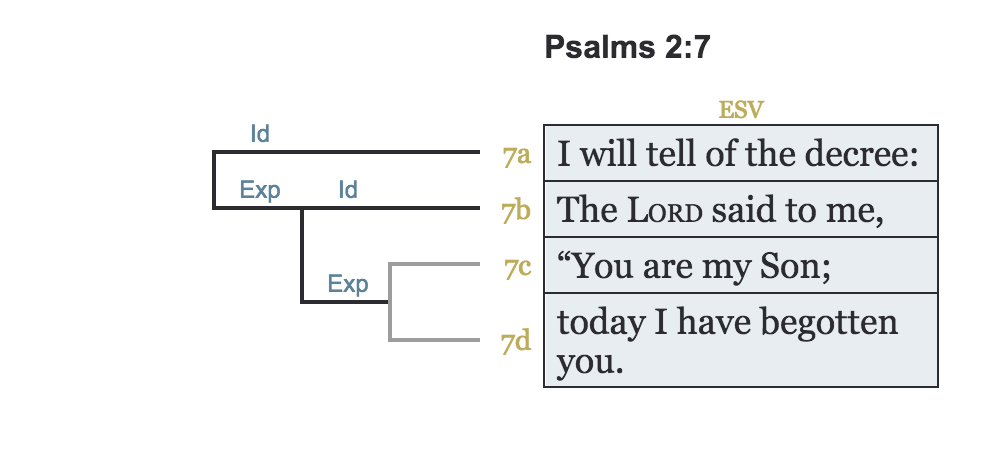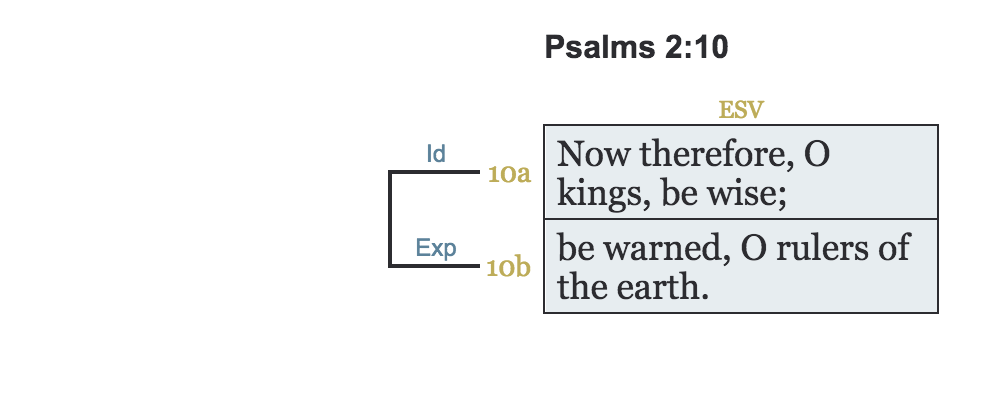Lesson 3 | Support by restatement
More on the same point
Introduction to the concept of the main point
It is now time to begin working through the subcategories of Subordinate relationships. The first subcategory to learn is Support by Restatement. All the relationships in this category indicate that one of the two pieces is—in some fashion—pointing back to and telling us more about the other piece. That other piece, therefore, is the main point between the two.
Note that the main point is not necessarily the most important point in the relationship. 1 John 4:7a reads, “Beloved, let us love one another, for love is from God.” The fact that love is from God is most important here, but it is not the main point. It is included to support the impulse of John's message in this half verse—namely, a call to love one another.
At this stage in the course, we will be highlighting the main point between two (or three) pieces in a single relationship. In a later lesson, this will be expanded to following the main point out for the entire passage.
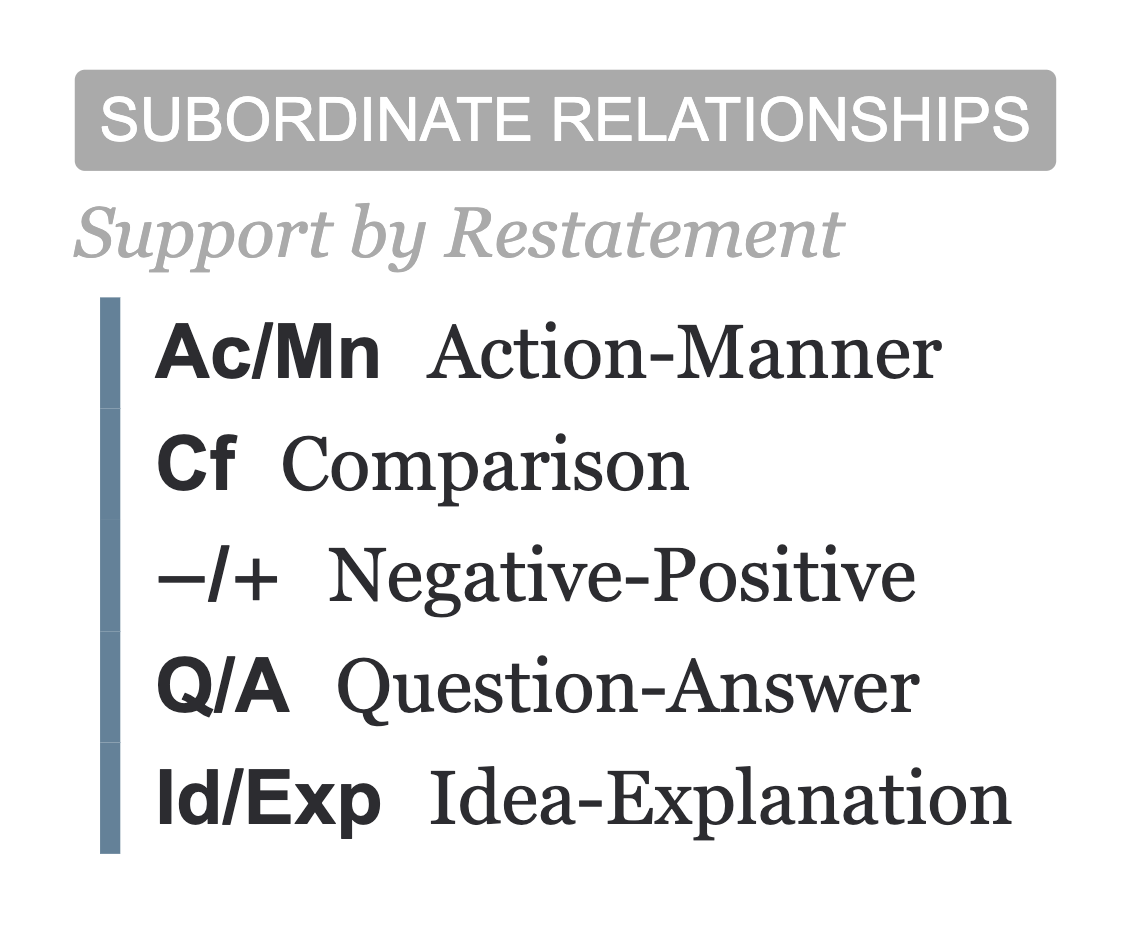
Action-Manner (Ac/Mn)
Definition: An action and the way or manner in which the action is carried out.
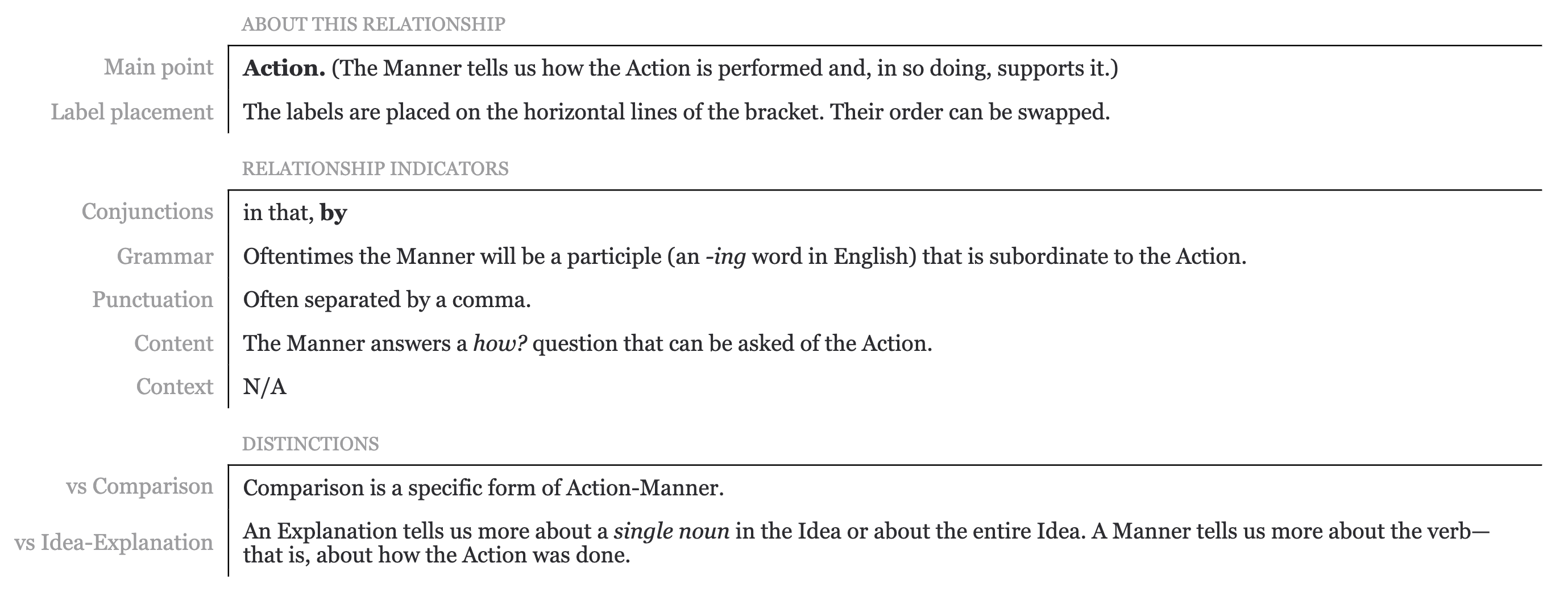
Everyday example: He blew out the candles by spitting all over the cake.
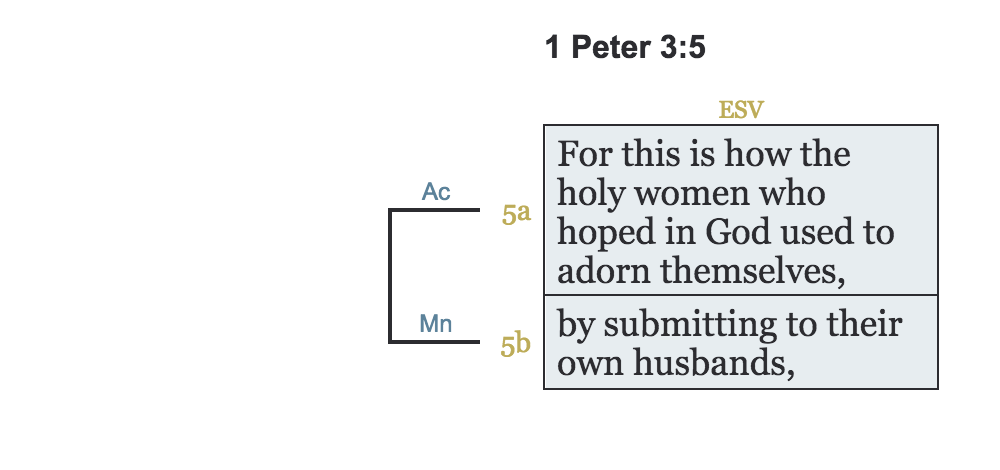
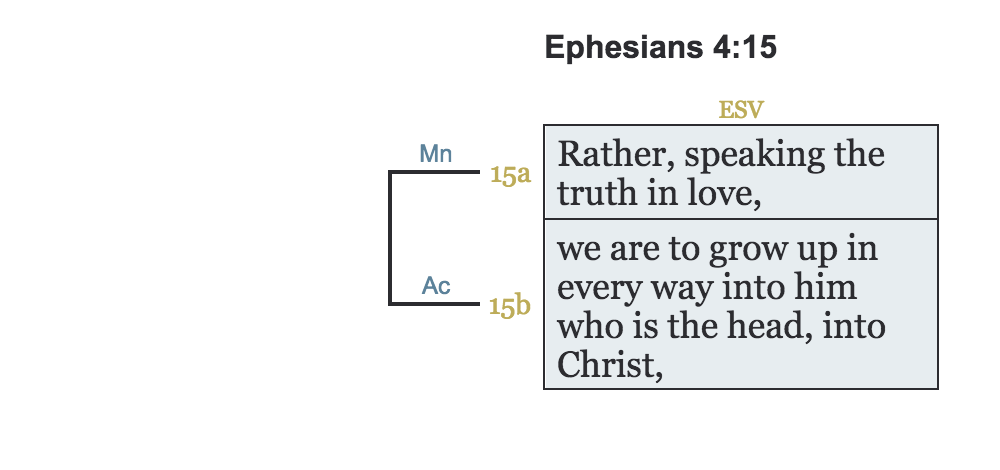
Note
While the concepts of manner and means are not identical, they are related in the fact they both answer the how? question. For this reason, they are both marked Action-Manner in Bracketing. In the above examples, 1 Peter 3:5b is a true manner whereas Ephesians 4:15a is a means.
Note
You should also note that labels are now placed on the lines since we have transitioned to Subordinate relationships.
Comparison (Cf)
Definition: An idea and a piece indicating what that idea is like.
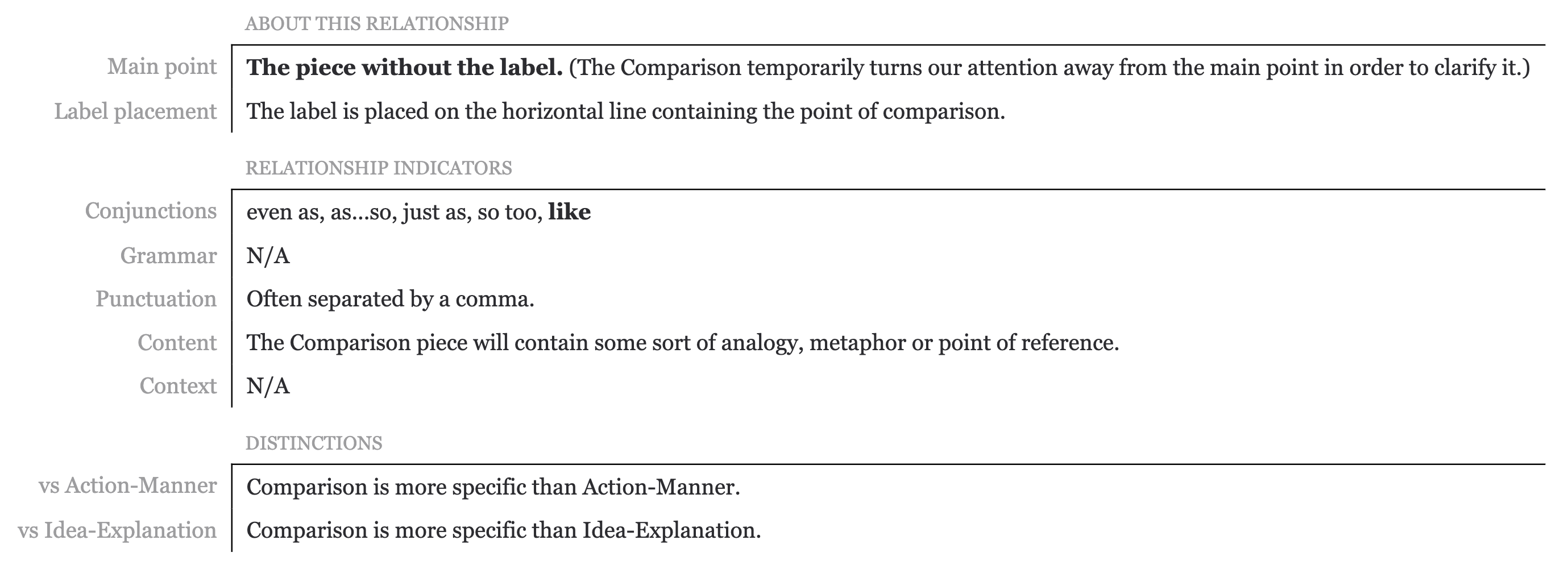
Everyday example: You want to do a ninja theme just like you did last year?


Note
Observe that some Subordinate relationships use two labels (eg. Action-Manner) whereas others use only a single label (eg. Comparison). There is no significance to this. It merely follows from the relationship names.
Negative-Positive (-/+)
Definition: One piece is denied while the other is affirmed. This is also the relationship implicit in a contrast.

Everyday example: I don’t like the socks from grandma, but my new toy truck is awesome.
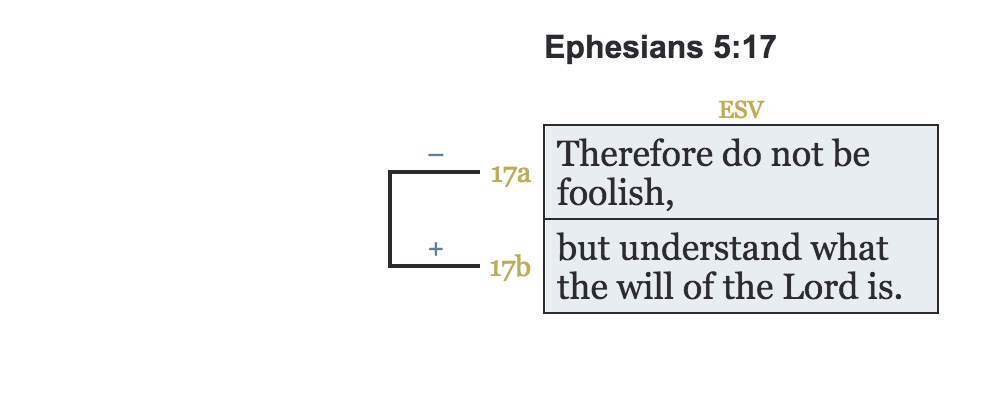
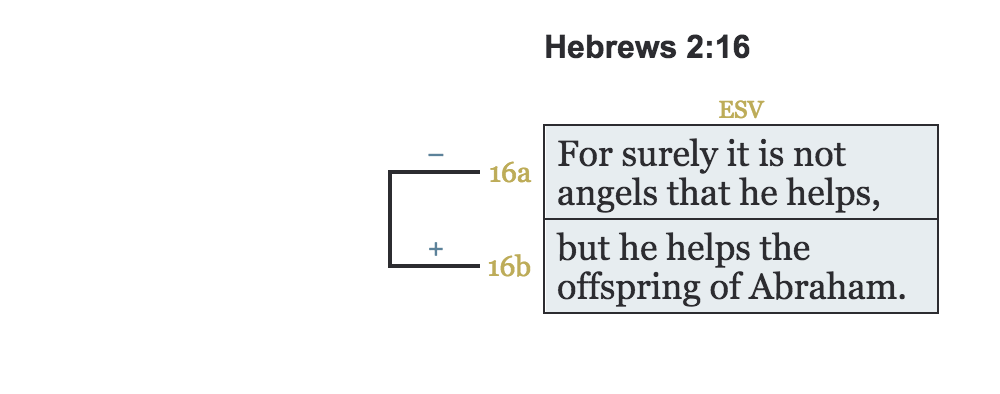
Question-Answer (Q/A)
Definition: The statement of a question and the answer to that question.
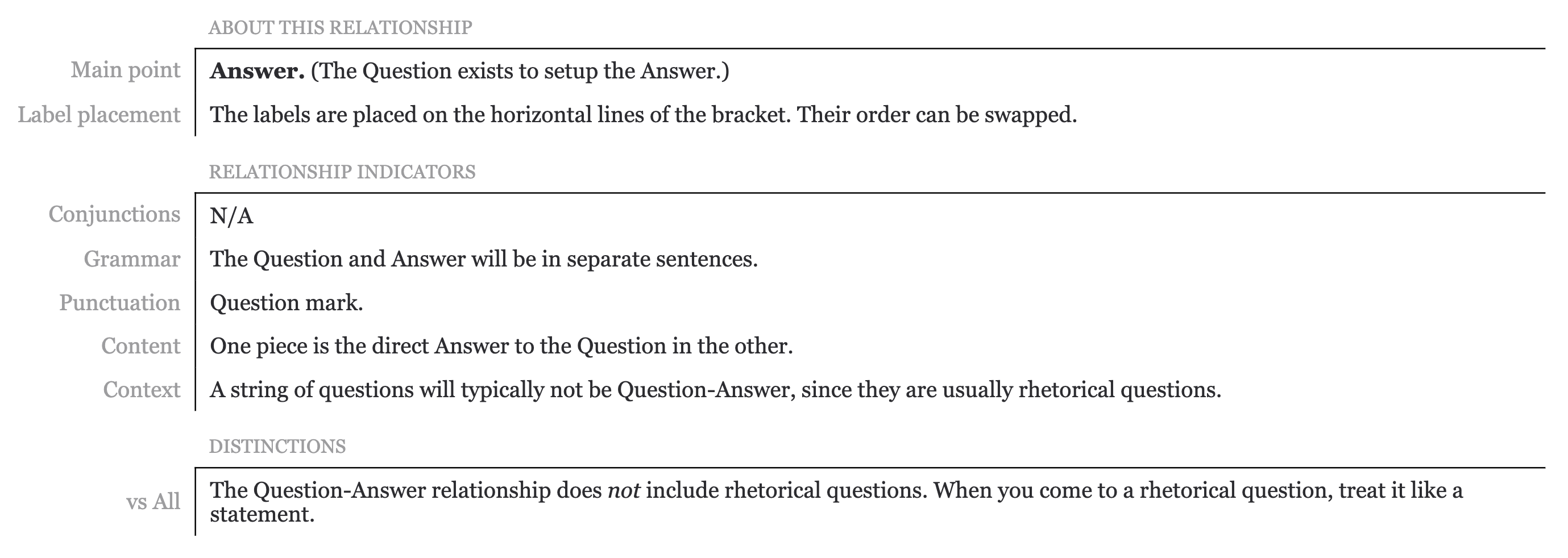
Everyday example: What time is it now? It is time to eat the cake!
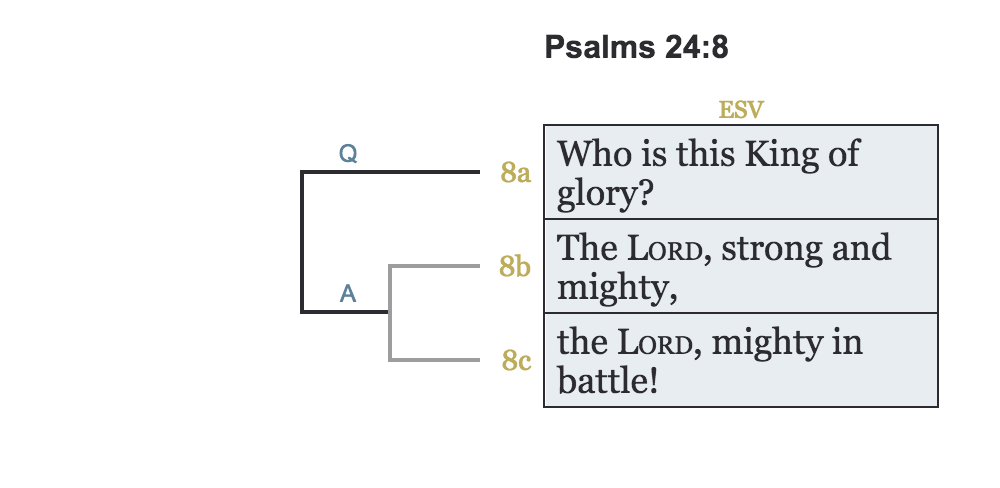
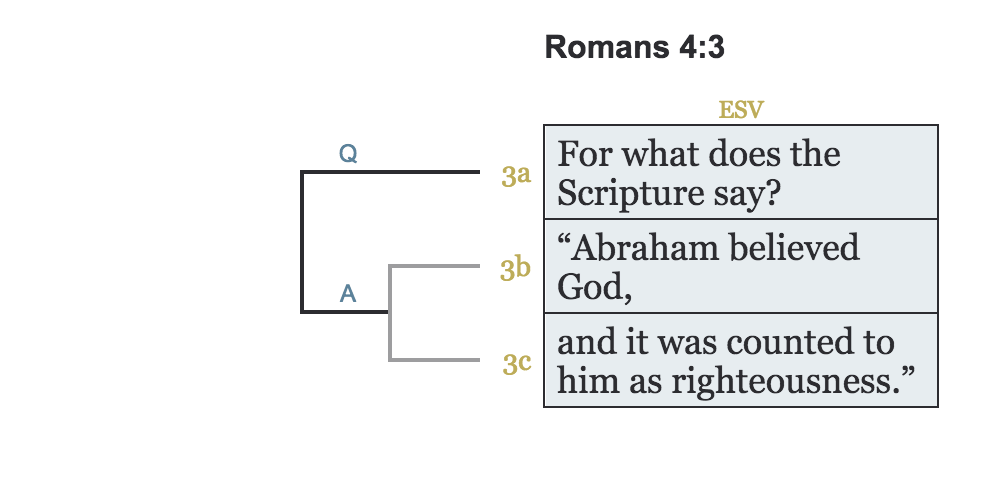
** The gray brackets in the examples above are not of interest to us and so have been left unmarked.
Idea-Explanation (Id/Exp)
Definition: An idea and another clarifying its meaning. The clarifying piece may expound on a single word of the idea or on its entirety.
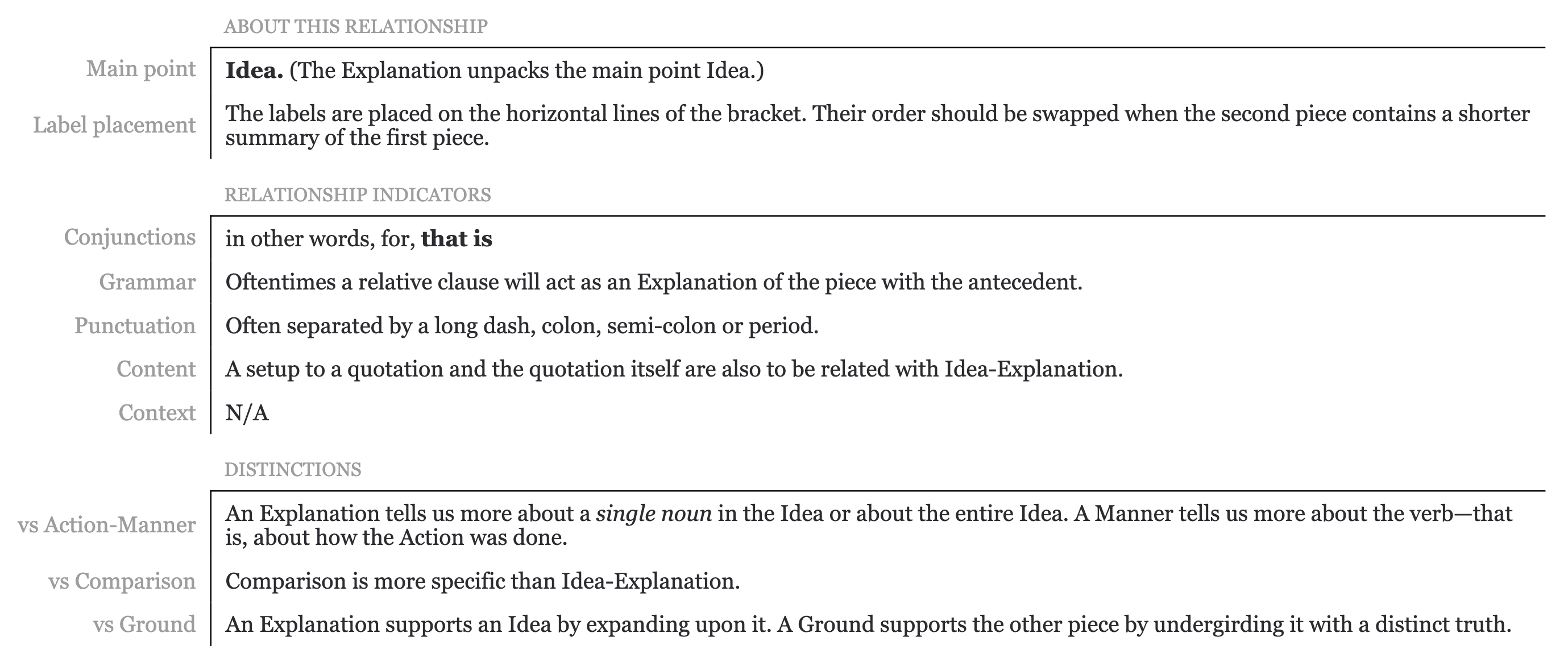
Everyday example: Joseph is turning thirteen today; he is now a young man.
